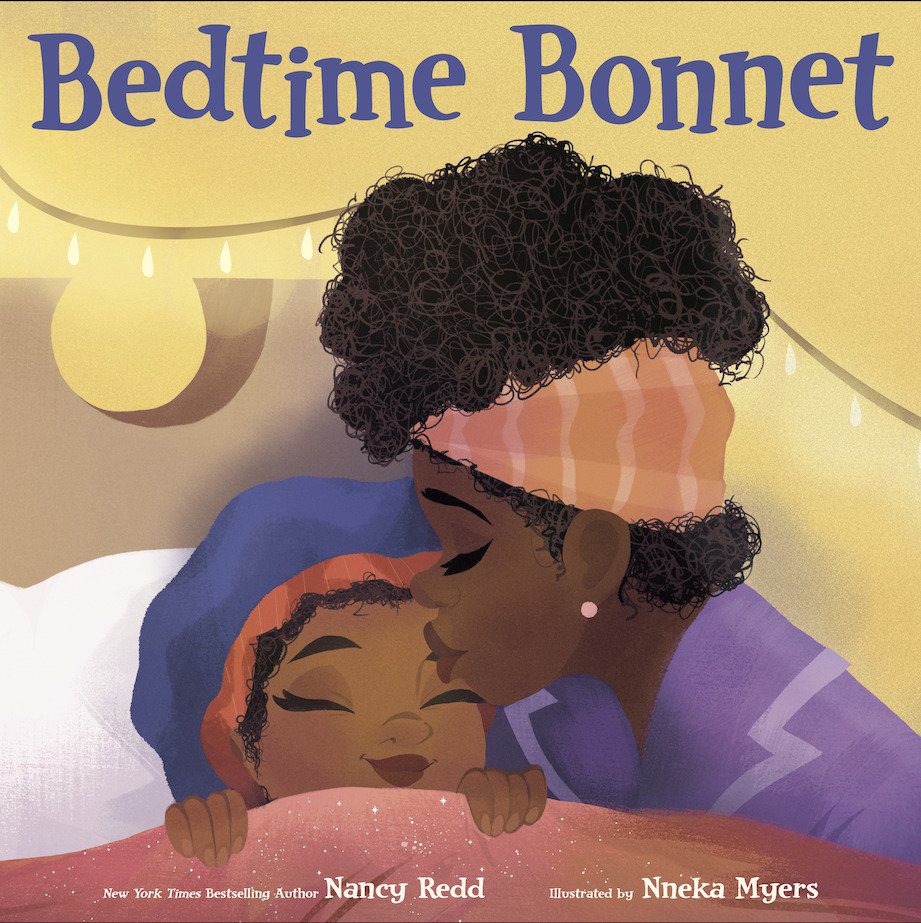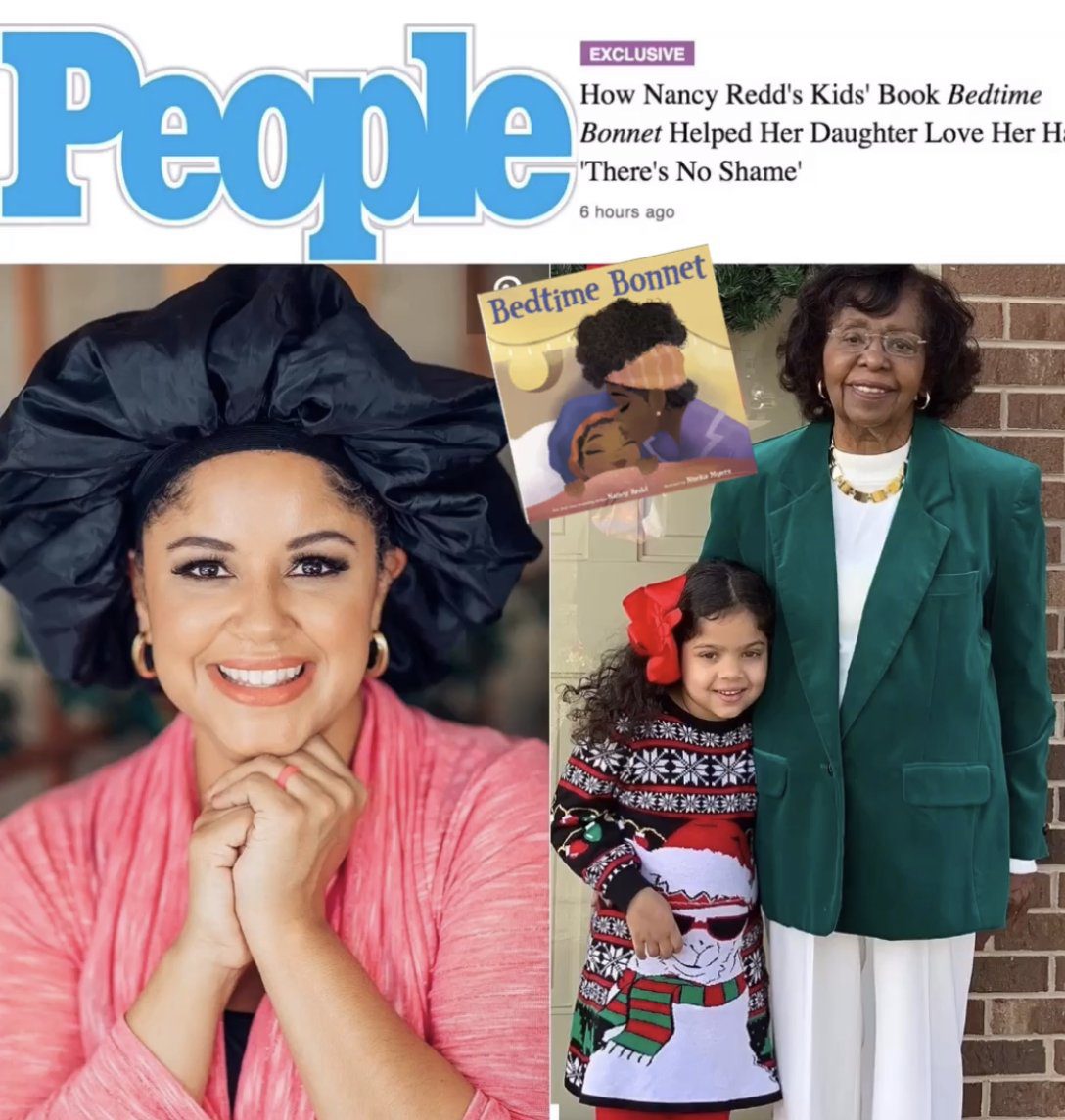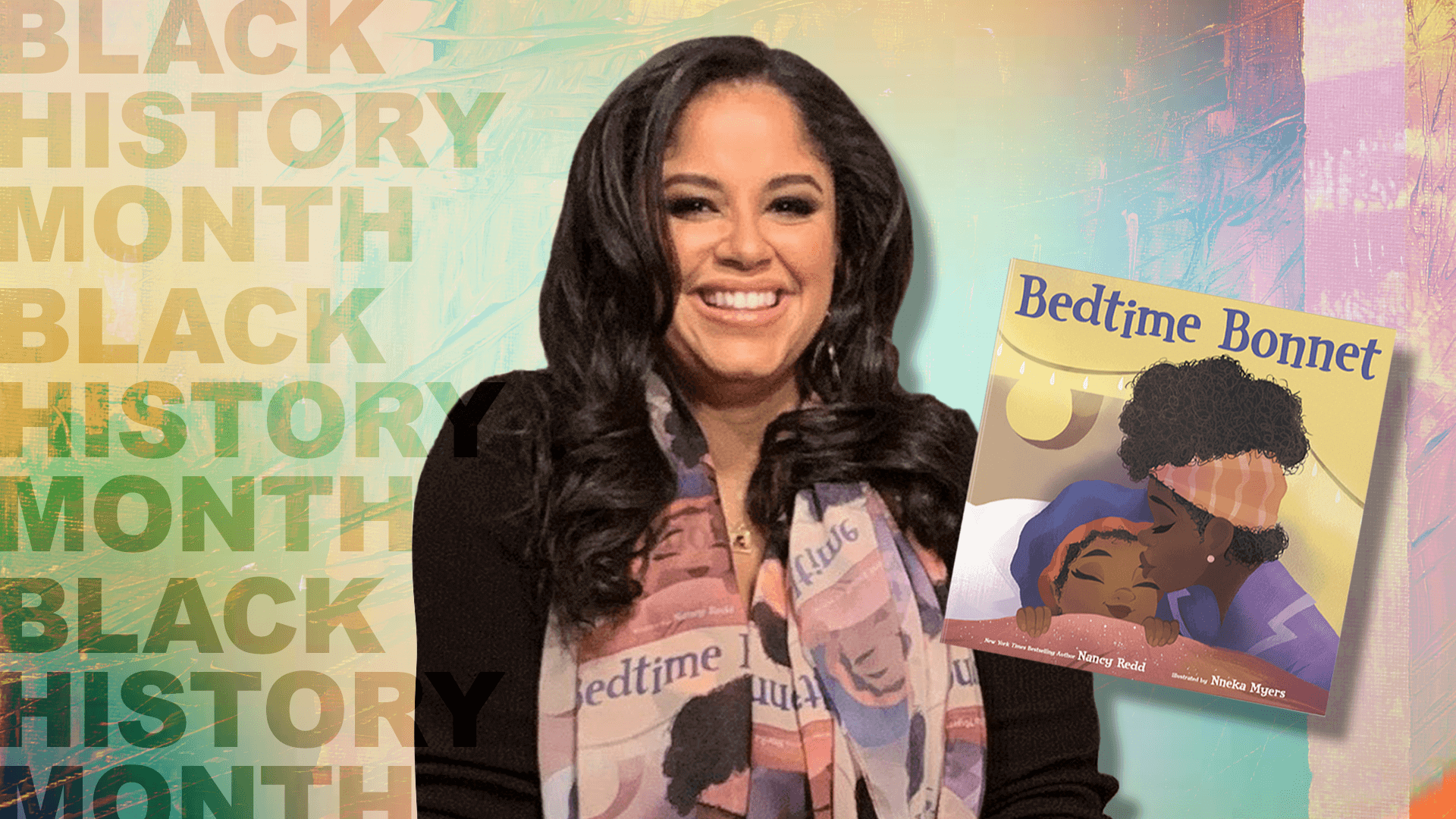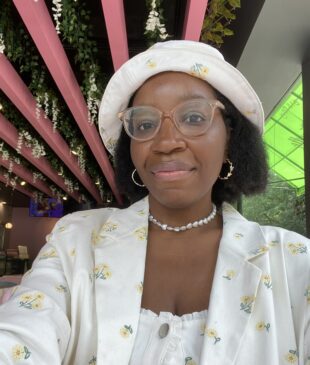In honor of Black History Month, The Tease will be bringing Black excellence to the forefront with inspiring stories from Black tastemakers, innovators, and creatives in the hair industry who are changing the game and inspiring others to do the same. Their impact, power, and creativity in the hair industry is undeniable and we celebrate them!
In most Black households, bedtime is never complete without a bonnet. In fact, wearing a bonnet to bed is pretty much a non-negotiable part of any Black nighttime hair ritual as New York Times bestselling author, Nancy Redd, proves in the very first page of her debut children’s book, Bedtime Bonnet: “In my family, when the sun goes down, our hair goes up!”
Written by Redd and illustrated by Nneka Myers, Bedtime Bonnet is the first picture-book to celebrate the Black tradition of wearing a bonnet at bedtime. Told through the lens of a close-knit, multi-generational Black family, the story follows a young girl as she enlists her family to help her search for her missing bonnet.
The Tease spoke to Redd about the inspiration for her book, her relationship with her hair, and the importance of diverse hair representation in children’s publishing.

The Tease: What inspired you to write Bedtime Bonnet?
Nancy Redd: When I first introduced the bedtime bonnet into my daughter’s nighttime hair routine, she balked at wearing it, because she thought a nighttime head covering was only for old people like me and her grandma. This is understandable because none of the cartoon characters of color on her favorite shows wore bonnets or durags to bed. My mom and I love our bonnets and I wanted my daughter to feel the same way, so I looked for an age-appropriate resource to help normalize and celebrate this facet of Black culture, to no avail. When I came up empty handed, I decided to create one myself and the result is Bedtime Bonnet!
What was your relationship with your own hair like as a young girl?
Redd: Every night until I was about 11 or 12, I would scoot between my mom’s legs, and my mom would drag out the Dax and Vitapointe and start combing, brushing, and braiding my hair while we watched TV. Like the girl in the book, I was tender-headed, so it was a struggle to sit still. But, it was always very comforting to be so close to my mom and I have lots of fond memories of us chatting during this time. When my mother did my hair, it was incredible. Once I took charge of doing my own hair as a tween, it started to look terrible, of course. But, that journey is a whole other conversation (and one I’m sure many of your readers can relate to!).

One thing that was beautiful to see in your book was the abundance of different skin tones and hair textures. Why was it important that this kind of diversity is depicted in a children’s book?
Redd: Black people are not a monolith. We come in all shapes and sizes and hues and I am thrilled to be able to express that reality in my books.
What do you think reading Bedtime Bonnet will do for Black children and their relationship with their hair?
Redd: It will certainly improve it! Seeing my daughter evolve from being a reluctant bonnet-wearer to her loving our nighttime rituals and drawing bedtime bonnet fan art alludes to the power of the printed page to promote positivity and pride. I love reading reviews of the book that say, “my daughter never complains about wearing her bonnet now,” or “My son wants a durag or bonnet now,” as they just warm my heart and is exactly what I hoped for when I embarked upon this journey!
With books like Hair Love as well as Bedtime Bonnet, we’re starting to see both the celebration and normalization of Black hair in children’s publishing. Why is it important for young readers to have books that depict Black hair in this way?
Redd: As the saying goes, you can’t be it if you can’t see it. A generation of girls are growing up comfortable with and proud of their bonnets and natural hair and that’s because of books like Hair Love and Bedtime Bonnet, and the wonderful books that came before it like I Love My Hair and Happy to Be Nappy, for sure!
Black people have long faced discrimination for their hair and how they choose to wear it. How do you feel you are contributing to the conversations that are currently being had about hair in the media and elsewhere?
Redd: Normalizing respect for our hair, which is intricately tied to our culture, is important. By firmly stamping bonnets and durags and wave caps into the zeitgeist with positive vibes and familiarizing all kinds of children and adults alike with our age-old traditions, I think it helps. It’s not the only facet, but it’s a powerful one.
What message do you have for other Black creatives like yourself who are also working towards bringing forth better hair representation in society?
Redd: Keep pushing! Keep networking! And never give up.
For more information about Nancy Redd and her book, Bedtime Bonnet, be sure to follow her @nancyredd on Instagram or visit her website.


